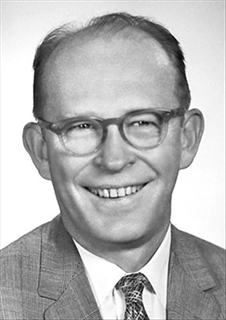 Willard F. Libby (1908-1980)
Willard F. Libby (1908-1980)
Willard F. Libby, working at the University of Chicago, discovered the carbon-14 dating method in 1946. This was considered to be a great breakthrough in the dating of remains of plants and animals of earlier times. It is the special method used, by scientists, to date organic materials from earlier times in history. Cosmic rays that enter our atmosphere from outer space strike the earth and transform regular nitrogen (nitrogen 14) to radioactive carbon (carbon 14).
Willard Libby and his associates discovered carbon 14 (C 14) as a method for the dating of earlier organic materials. But later research revealed that its inaccuracy increases in accordance with the actual age of the material (*C.A. Reed,
“Animal Domestication in the Prehistoric Near East,” in Science, 130, 1959, p. 1630; University of California at Los Angeles,
“On the Accuracy of Radiocarbon Dates,”in Geochronicle, 2, 1966 [Libby’s own laboratory]).
Carbon 14 has a half-life of about 5730 years. This method of dating is called carbon-14 dating, C-14 dating, or radiocarbon dating. Within about 12 minutes after being struck by cosmic rays in the upper atmosphere, the carbon 14 combines with oxygen, to become carbon dioxide that has
carbon 14 in it. It then diffuses throughout the atmosphere, and is absorbed by vegetation (plants need carbon dioxide in order to make sugar by photosynthesis). Every living thing has carbon in it. While it is alive, each plant or animal takes in carbon dioxide from the air. Animals also feed on
some carbon 14 in all of that carbon dioxide. At death, the carbon 14 continues on with its radioactive decay. Theoretically, analysis of this carbon 14 can tell the date when the object once lived, by the percent of carbon-14 atoms still remaining in it.
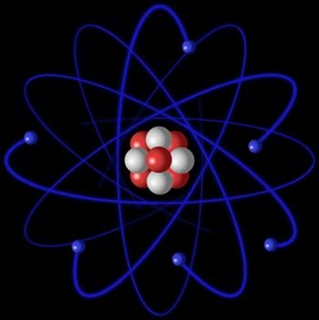 1
1- Libby’s method involves counting the Geiger counter clicks per minute per gram of a dead material in order to figure out when that plant or animal died. It sounds simple and effective, but in practice it does not turn out that way. “It may come as a shock to some, but fewer than 50 percent of the radiocarbon dates from geological and archaeological samples in northeastern North America have been adopted as ‘acceptable’ by investigators.”
(1)
2- Flint and *Rubin declare that radiocarbon dating is consistent within itself. What they do not mention is that the published C-14 dates are only “consistent” because the very large number of radiocarbon dates which are not consistent are discarded! Two researchers from the University of Uppsala, Sweden, in their report to the Twelfth Nobel Symposium, said this: “C-14 dating was being discussed at a symposium on the prehistory of the Nile Valley. A famous American
colleague, Professor Brew, briefly summarized a common attitude among archaeologists toward it, as follows: ‘If a C-14 date supports our theories, we put it in the main text. If it does not entirely contradict them, we put it in a footnote. And if it is completely ‘out-of-date,’ we just drop it.”
(2)
THIRTEEN ASSUMPTIONS—As mentioned above, radiocarbon dating was invented by *Willard Libby. From the beginning—and consistently thereafter—he and his associates proceeded on the assumption that (1) the way everything is now, so it always has been, and (2) no contaminating factor has previously disturbed any object tested with radiodating techniques. The result is a nice, tidy little theory that is applied to samples, without regard for the immense uncertainties of
how the past may have affected them individually and collectively. It is for this reason that *Libby was able to ignore all of a sample’s past. Now let us consider the underlying assumptions about
radiocarbon dating that are made in order to make it a workable method, even though not a reliable one.
(1) Atmospheric carbon: For the past several million years, the air around us had the same amount of atmospheric carbon that it now has
(2) Oceanic carbon: During that time, the very largeamount of oceanic carbon has not changed in size.
(3) Cosmic rays: Cosmic rays from outer space have reached the earth in the same amounts in the past as now.
(4) Balance of rates: Both the rate of formation and rate of decay of carbon 14 have always in the past remained in balance.
(5) Decay rates: The decay rate of carbon 14 has never changed.
(6) No contamination: Nothing has ever contaminated any specimen containing carbon 14.
(7) No seepage: No seepage of water or other factor
has brought additional carbon 14 to the sample since death occurred.
(8) Amount of carbon 14 at death: The fraction of carbon 14, which the living thing possessed at death, is
(9) Carbon 14 half-life: The half-life of carbon 14 has been accurately determined.
(10) Atmospheric nitrogen: Nitrogen is the precursor to Carbon 14, so the amount of nitrogen in the atmosphere must have always been constant.
(11) Instrumentation and analysis: The instrumentation is precise, working properly, and analytic methods are always carefully done.
(12) Uniform results: The technique always yields the same results on the same sample or related samples that are obviously part of the same larger sample.
(13) Earth’s magnetic field: Earth’s magnetic field was the same in the past as it is today. We have some big “ifs” in the above 13 assumptions! In reality, there is not one instance in which we can point to a C-14 sample and declare with certainty that EVEN ONE of those assumptions applies to it.
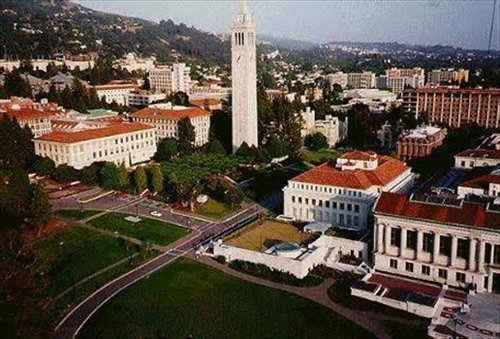 Berkeley University, California where Dr. Libby taught chemistry from 1959 to his retirement in 1976
Berkeley University, California where Dr. Libby taught chemistry from 1959 to his retirement in 1976
Willard Libby’s training was in science, not history, so he and his co-workers were initially startled to learn that recorded history (actual historical events) only goes back to about 3000 B.C. They had been taught in school that it extended back 20,000 years!(We will learn in the chapter on Ancient Man, that the earliest dates of Egypt are based on the uncertain and incomplete king-lists of Manetho. The earliest Egyptian dates should probably be lowered to 2200 B.C.) Like many other bright hopes that men had at last found a way to date things prior to 4300 years ago, radiocarbon
dating has turned out to be just another headache to conscientious scientists.They work with a method that does not give accurate results. But they keep working, collecting data, and hoping for better dating methods at some future time.“Well-authenticated dates are known only back as far
as about 1600 B.C. in Egyptian history, according to John G. Read. [J.G. Read,
Journal of Near Eastern Studies, Vol. 29, No. 1, 1970]. Thus, the meaning of dates by Carbon 14 prior to 1600 B.C. is still as yet controversial.”— H.M. Morris, W.W. Boardman, and R.F. Koontz,
Science and Creation (1971), p. 85. A side from the few that can be checked by historical records, there is no way to verify the accuracy of C-14 dates.
SIXTEEN RADIODATING PROBLEMS—Here is a brief discussion of some of the serious hurdles to accuracy in C-14 (radiocarbon) dating:
(1) TYPE OF CARBON—Uncertainties regarding the type of carbon that may be in a given sample causes
significant errors in dating. As mentioned earlier, every living thing is full of carbon compounds, and includes some carbon 14. But, after death, additional radioactive carbon may have drifted into the sample. Few researchers take the exhaustive time needed to try and figure out which carbon is which. Frankly, in most instances, it would be impossible to be certain how much of this secondary or intrusive carbon had entered the sample from elsewhere.
(2) VARIATIONS WITHIN SAMPLES-Then there is the problem of variations within each of the samples. Part of the sample tests one way, and part tests another way. So many factors affect this that the experts are finding it seemingly impossible to arrive at accurate dates.
(3) LOSS OF CARBON 14—Rainfall, lakes, oceans, and below-ground moisture will cause a loss of Carbon 14, and thus ruin its radiation clock.
(4) CHANGES IN ATMOSPHERIC CARBON—In addition, it is not known what carbonic and atmospheric conditions were like in ancient times. We know it was different, but do not know to what degree. Evidence is surfacing that changes have occurred which would invalidate ancient dates determined by carbon-14 analysis. Spot production radically affects radiocarbon production in the atmosphere.
(5) SUNSPOT EFFECT ON C-14 PRODUCTION—Important discoveries have been made recently in regard to sunspots. Major variations in sunspot production have occurred in the past, some of which we know of.
These have resulted in decided changes in radiocarbon production. (1) From A.D. 1420 to 1530 and from 1639 to 1720 there were few sunspots; during those years not a single aurora was reported anywhere around the globe. Northern Europe became something of an icebox; and there was an increase in solar wind, with consequent higher C-14 production in the atmosphere at that time. (2) In the 12th and early 13th centuries, there was unusually high sunspot activity for a number of years. At that time, there was less C-14 production, warmer climate, increased glacial melt, and unusually brilliant displays of the aurora borealis. Thus, we see that the past is not the same as the
present in regard to radiocarbon production; yet “uniformity”—“the past is like the present”—is a basic premise in all carbon-14 dating. When radiocarbon production in the atmosphere is so drastically changed, dating results, based on carbon 14 in creatures who lived at that
time, are seriously affected. A number of additional sunspot changes in the centu-
ries before then have been discovered. Each major change
has generally lasted from 50 to several hundred years.
(6) RADIOCARBON DATE SURVEY—A major survey of 15,000 dates obtained by carbon 14 dating revealed that, in spite of its errors, radiocarbon dating continually yields dates that are millions and even billions of years younger than those obtained by other radiodating
techniques (uranium, thorium, potassium, etc.).
(7) CHANGE IN NEUTRINO RADIATION—A change in neutrino radiation into our atmosphere in earlier
times would also affect radiocarbon levels. But we have no way of measuring past neutrino radiation levels.
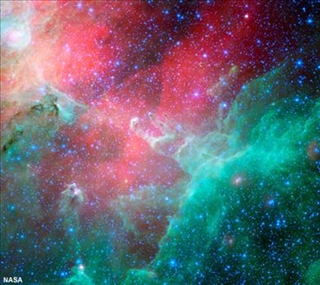 (8) COSMIC RAYS
(8) COSMIC RAYS—The amount of cosmic radiation entering our atmosphere and reaching the earth would also be crucial. A partial change in cosmic radiation amounts would also greatly affect C-14 dating. But a change in cosmic radiation from outer space would not be necessary, only a change in the amount of water or warmth—or both—in our atmosphere.
(9) MAGNETIC FIELD—Scientists now know that there has been a fairly rapid weakening of earth’s magnetic field. It is cosmic radiation entering our atmosphere that changes Carbon 12 into Carbon 14. The three go
together: earth’s magnetic field, cosmic rays, and Carbon 14. Thus the strength of earth’s magnetic field has a major effect on the amount of carbon 14 that is made.
(10) MOISTURE CONDITIONS—Atmospheric changes in moisture content in the past would also significantly affect C-14 amounts. Changes in ground moisture, even temporary ones, would have an even greater impact. How much moisture came into contact with a given sample at various times in past ages? Could water have trickled alongside or through the sample at some earlier time? What about storage problems in more recent times or after the sample was collected? Prior to testing, was the sample placed in a location more damp than where it was found? —All these factors can decidedly affect the internal clockwork of radiocarbon samples.
(11) IF WARMER AND MORE WATER VAPOR—If the earth was either warmer at an earlier time or had more water in the atmosphere (both of which we believe happened before and during the Flood), then the C-14 clocks would register long ages of time prior to about 2000 B.C.
(12) DRAMATIC CHANGES AFTER FLOOD—For some time after the Flood there were changes in the atmosphere climate (due to worldwide warmth changing to cooler conditions), and changes due to volcanism and glaciation. Because of these dramatic worldwide alterations, plants, animals, and people living in the early centuries after the Flood would have received much less carbon 14 than they would receive today. This would make those earlier life-forms and civilizations appear to be much more ancient by radiocarbon dating methods than they actually were. With the passing of the centuries, the carbon-14 radiation levels would have gradually increased until, by about 1000 B.C., they would have been close to early nineteenth-century levels.This is why radiocarbon dates for the past 2600 years(going back to c.600 B.C.) generally show a better correlation with historically verified chronologies. But even in dates from 2600 B.C. on down to the present there are discrepancies in carbon-14 dates.
(13) RECENT DATES ARE MOST ACCURATE—It is rather well-known that carbon-14 dates, going back about 2600 years, tend to be the most accurate. But, prior to about 600 B.C., the dates given by radiocarbon analysis begin lengthening out excessively.
(14) EVEN MODERN SPECIMENS ARE INACCURATE—It is a surprising fact that even specimens from recent centuries show serious problems. Consider a few examples. They reveal that radiocarbon dating cannot be relied on as accurate evidence for anything: Mortar from Oxford Castle in England was dated by radiocarbon as 7370 years old, yet the castle itself was only built 785 years ago (E.A. von Fange,
“Time Upside Down,“ quoted in Creation Research Society Quarterly, November 1974, p. 18). Freshly killed seals have been dated at 1300 years. This means they are supposed to have died over a millennium ago. Other seals which have been dead no longer than 30 years were dated at 4600 years (*W. Dort,
“Mum-
mified Seals of Southern Victoria Land,” in Antarctic Journal of the U.S., June 1971, p. 210). Wood was cut out of living, growing trees. Although only a few days dead, it was dated as having existed 10,000 years ago (*B. Huber,
“Recording Gaseous Exchange Under Field Conditions,” in Physiology of Forest Trees, ed. by *K.V. Thimann, 1958). Various living mollusks (such as snails) had their shells dated, and were found to have “died” as much as 2300 years ago (*M. Keith and *G. Anderson,
“Radiocarbon Dating: Fictitious Results with Mollusk Shells,” in Science, 141, 1963, p. 634).
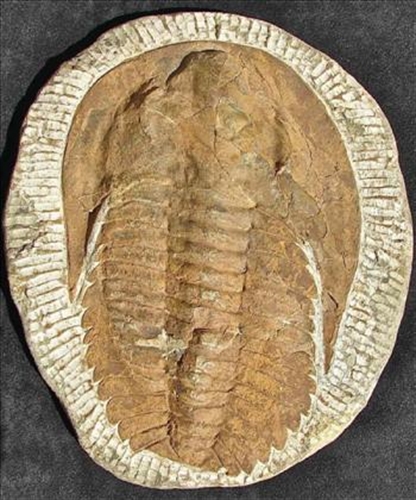 (15) CARBON INVENTORY
(15) CARBON INVENTORY—Due to drastic changes at the time of that immense catastrophe, the Flood, there is reason to believe that dramatic changes were occurring at that time in the carbon-14 content of the atmosphere. In
addition, massive amounts of carbon were buried then. Immense worldwide forests became fossils or coal, and millions of animals became fossils or petroleum. A world carbon inventory by *W.A. Reiners reveals that the total amount of carbon in the world today is less than 1/500th of the total amount that is locked into fossil plants and animals within sedimentary rock strata! (See *W.A. Reiners,
Carbon and the Biosphere, p. 369). An enormous amount of carbon was buried at
the time of the catastrophe of the Flood. If the same world inventory of carbon 14—as now exists—were distributed in that pre-Flood biosphere as living plants and animals, the level of C-14 activity back then would have been 500 times as much as the amount existing now. This alone would account for nine C-14 half-lives, or 51,000 years of the radiocarbon timescale. This factor alone
totally destroys the usefulness of radiocarbon dating.
(16) THROWING OFF THE CLOCK—In his book,
Evolution or Degeneration (1972, pp. 80-81), H.R. Sieglerons that *Willard F. Libby, the developer of radiodating, found a serious discrepancy at a certain point in past history that indicated his assumed build-up of
terrestrial radiocarbon was inaccurate. But, since he was convinced that the earth was millions of years old, he went ahead with his date assumptions. Siegler suggests that a relatively recent Creation (plus, we might add, the catastrophic effects of the Flood) would account for the
discrepancy. Keep in mind that, before the Flood, a vast vapor canopy was in our atmosphere, which would tend to shield the earth from radiocarbon buildup. This is the problem: Prior to about 1600 B.C., radiodating tends to go wild. Something happened back then that threw the clock off. Creation scientists recognize that the problem was the Genesis Flood and the abnormal conditions that existed for centuries after it ended.
C-14 DATA POINTS TO THE FLOOD—An immense number of plants and animals died at the time of the Flood, as recorded in Genesis 6-9. One would expect that radiocarbon dating should produce a large number of specimens that died at about the same time. Due to errors in dating, we would not expect those carbon-14 dates to correspond with the time of the Flood, but we should expect them to nonetheless point to a time when there was a dramatic increase in the number of deaths.
In 1970, R. Whitelaw, of Virginia Polytechnic Institute, went through the research literature on radiocarbon dating and carefully compiled 25,000 C-14 dates up to that year. The specimens were of people, animals, and vegetation obtained from above and below sea level. Whitelaw then applied certain principles to help avoid disparity problems between radiocarbon production and disintegration. He then put the results of his research into a single graph. The chart showed a gradual increase in deaths from about 5000 B.C. onward. The deaths peaked at about 4000 years ago (2000 B.C.). Errors in radiocarbon dating would be responsible for the 2000-year spread in the largest number of deaths.
MASS SPECTROMETER—Here is a technique that you are not likely to hear much about. The problem for evolutionists is that it consistently yields dates that are too low. Yet if its conclusions were accepted, ALL fossils, ALL coal, ALL petroleum, and ALL hominid (ancient man) bones would be dated less than 5000 years in the past! The mass spectrometer technique is fairly new, and
the equipment is quite expensive. Unfortunately, when working with radiocarbon, the results will still be skewed (dates will appear to be too ancient) because the atmosphere in ancient times had a different amount of carbon 14 than it now has. Jarmo was an ancient village that was inhabited for not over 500 years. It was discovered in northeast Iraq. Eleven different C-14 tests were made there, and dates with a 6000-year spread were tallied up! A fundamental scientific principle is that a correct method will give the same result when repeated; if it cannot do this, it is not scientific.
As with the other methods of non-historical dating, we find that radiocarbon dating is also highly inaccurate. “The troubles of the radiocarbon dating method are
undeniably deep and serious...It should be no surprise, then, that fully half of the dates are rejected. The wonder is, surely, that the remaining half come to be accepted.”
(3)